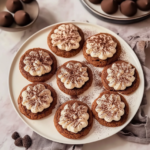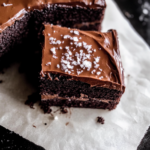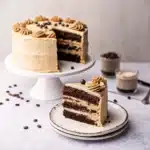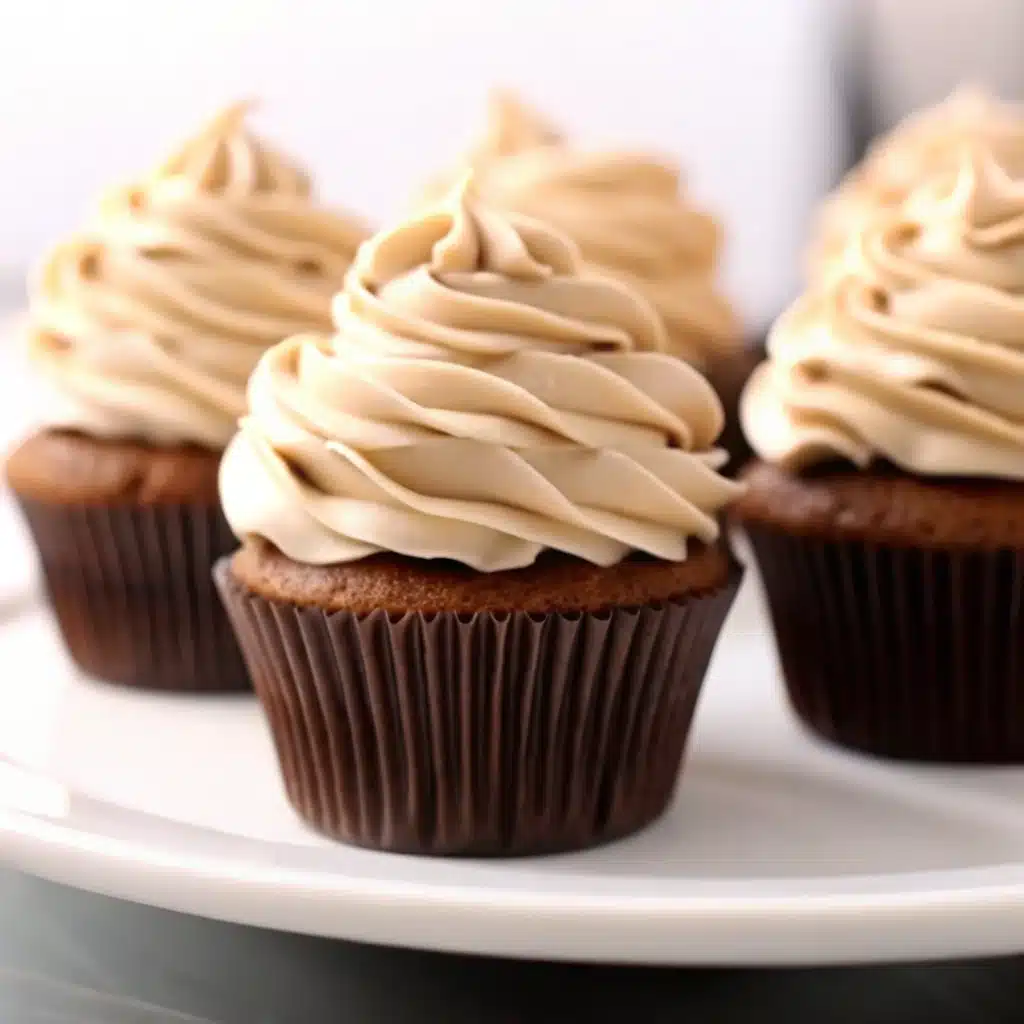
Russian Buttercream is one of baking’s best-kept secrets. Smooth, dreamy, and made with just two simple ingredients, it’s a revelation for anyone who loves frosting but hates the fuss. Whether you’re icing a birthday cake or piping onto cupcakes for a tea party, Russian Buttercream delivers a velvety texture that feels rich without being too sweet—and it comes together faster than any other buttercream I’ve tried.
I’m Mary, known around Bath as “The Pudding Lady,” and my journey with desserts began long before I could reach the top shelf of the pantry. My mum taught me to bake the old-fashioned way—golden syrup sticking to fingers, flour clouding the air, and the oven always slightly too warm. I never trained professionally (too much queuing, not enough joy), but I baked endlessly: Victoria sponges, treacle puddings, and Christmas mince pies that made grown-ups tear up.
Over the years, I shared my puddings at church halls and school fêtes, until someone asked me, “Why not teach others to bake like this?” And so, my weekend pudding club was born. Six people around my kitchen table, endless pots of tea, and flour on every surface by the end of it. It’s there that I introduce my students to hidden gems like Russian Buttercream—a frosting so easy and impressive, it almost feels like cheating.
In this guide, I’ll show you why Russian Buttercream deserves a spot in your recipe book. We’ll explore how it compares to other frostings, how to store it, whether you can freeze it, and how long it lasts at room temperature. You’ll also learn how to master the texture, flavor it beautifully, and avoid the most common mistakes.
Table of Contents
What Is Russian Buttercream?
Definition and Characteristics of Russian Buttercream
Russian Buttercream is a two-ingredient frosting made primarily from butter and sweetened condensed milk. It has a light ivory color, smooth spreadability, and a silky mouthfeel. Unlike American buttercream, it’s less sweet, making it a favorite among those who prefer a richer, creamier frosting without the sugar overload.
The beauty of Russian Buttercream lies in its simplicity. You won’t need powdered sugar, meringue, or a candy thermometer. The recipe is almost foolproof and comes together in minutes with just a hand mixer.
Here’s a quick breakdown of what makes it stand out:
| Feature | Russian Buttercream |
|---|---|
| Ingredients | Butter + Sweetened Condensed Milk |
| Flavor | Rich, buttery, slightly sweet |
| Texture | Smooth, silky, not gritty |
| Piping Ability | Excellent |
| Preparation Time | 10–15 minutes |
| Sweetness Level | Lower than American buttercream |

Russian Buttercream
- Total Time: 10 minutes
- Yield: 2 cups 1x
- Diet: Vegetarian
Description
This smooth, creamy, and lightly sweet Russian Buttercream is made with just two main ingredients: butter and sweetened condensed milk. Perfect for frosting cakes and cupcakes!
Ingredients
- 1 cup unsalted butter, softened
- 1 can (14 oz) sweetened condensed milk
- 1 tsp vanilla extract (optional)
- Pinch of salt (optional)
Instructions
- In a large bowl, beat the softened butter on high speed until pale and fluffy, about 5-7 minutes.
- Gradually add the sweetened condensed milk, one tablespoon at a time, beating well after each addition.
- Once fully combined, mix in vanilla extract and salt if using.
- Continue to beat until the buttercream is silky smooth and airy.
- Use immediately or store in the refrigerator and re-whip before using.
Notes
Ensure both butter and condensed milk are at room temperature to prevent curdling. If the mixture appears split, continue beating—it will come together.
- Prep Time: 10 minutes
- Cook Time: 0 minutes
- Category: Frosting
- Method: No Cook
- Cuisine: Russian
Nutrition
- Serving Size: 2 tablespoons
- Calories: 150
- Sugar: 10g
- Sodium: 40mg
- Fat: 11g
- Saturated Fat: 7g
- Unsaturated Fat: 3g
- Trans Fat: 0g
- Carbohydrates: 11g
- Fiber: 0g
- Protein: 1g
- Cholesterol: 30mg
Origins and How It Differs from Other Buttercreams
Despite the name, Russian Buttercream didn’t exactly originate in Russia’s professional kitchens. It’s believed to be inspired by Eastern European traditions where sweetened condensed milk is a pantry staple. The method became popular online among bakers looking for fast, stable frosting without the hassle of meringues or boiled sugar syrups.
How is it different from other buttercreams?
- American Buttercream: Uses powdered sugar and butter. It’s very sweet and can be gritty.
- Swiss Meringue Buttercream: Light and airy, but more time-consuming and involves heating egg whites.
- Italian Meringue Buttercream: Complex and requires precision. Smooth but intimidating for beginners.
- Russian Buttercream: No eggs, no sugar syrup. Just whip butter, add condensed milk, and you’re done.
Don’t miss our chocolate-strawberry cake, which pairs beautifully with a rich Russian Buttercream twist.
Russian Buttercream’s simplicity, versatility, and flavor make it a rising star in the baking world. Whether you’re making cupcakes or layered cakes, this frosting is ready to rise to the occasion.
Key Ingredients of Russian Buttercream
Sweetened Condensed Milk: The Signature Element
If Russian Buttercream had a signature secret, it would be the rich, velvety sweetness of condensed milk. This thick, sticky, caramel-colored milk adds both sweetness and structure to the frosting without the need for powdered sugar. Unlike other frostings where sugar can create a gritty texture, sweetened condensed milk offers smoothness and a mild, creamy flavor that complements almost any cake.
Why it works so well:
- Consistency: It blends seamlessly with softened butter.
- Sweetness: Naturally sweet but not overpowering.
- Stability: Helps the buttercream hold its shape without crusting.
When choosing sweetened condensed milk, opt for a high-quality brand. Generic or low-fat versions can lead to runny or greasy results. Always use full-fat, classic condensed milk—not evaporated milk or unsweetened alternatives.
Pro Tip: Want an even deeper flavor? Use homemade condensed milk or a caramelized version like dulce de leche for a twist. Explore delicious inspirations like our salted chocolate cake, perfectly paired with a luscious dulce de leche buttercream.
Butter Quality and Temperature: Why It Matters
The second star in the Russian Buttercream duo is unsalted butter. Since butter makes up over 50% of the frosting, its flavor and consistency will directly affect your final result.
Butter Must-Haves:
- High-fat content (82% or more) for a creamier, thicker texture.
- Unsalted variety gives you more control over flavor.
- Room temperature is key—ingredients should be soft enough to whip smoothly, but not so warm that they become melty or runny.
If the butter is too cold, your frosting won’t whip smoothly. If it’s too soft, it’ll turn greasy or collapse when piped.
Here’s a quick temperature test:
Press your finger into the butter—it should leave an indent without sinking entirely. That’s the sweet spot.
| Ingredient | Ideal Choice | Avoid This |
|---|---|---|
| Butter | European-style, unsalted | Margarine or whipped butter |
| Sweetened Condensed Milk | Full-fat brand (e.g. Eagle) | Low-fat or evaporated milk |
Using quality butter and proper technique ensures the buttercream won’t separate or turn too soft in warm kitchens. That’s a huge advantage for decorators.
Check out our romantic chocolate and strawberry cupcakes for a stunning visual example of buttercream that holds up beautifully under pressure.
How to Make Russian Buttercream at Home
Step-by-Step Guide to Preparing Russian Buttercream
Making Russian Buttercream is easier than most frostings. With only two main ingredients and no cooking, it comes together quickly and is beginner-friendly. Here’s a reliable, foolproof method to ensure perfect results every time.
Ingredients:
- 1 cup (2 sticks) unsalted butter, room temperature
- 1 can (14 oz) sweetened condensed milk
Optional Add-ins:
- 1 tsp vanilla extract
- A pinch of salt
- Flavorings (e.g., cocoa powder, espresso, fruit puree)
Instructions:
- Whip the butter
Using a stand mixer or hand mixer with the paddle or whisk attachment, beat the butter on medium-high speed for about 5–7 minutes, until it becomes light, fluffy, and pale in color. This step is key—don’t rush it. - Slowly add condensed milk
Lower the mixer to medium speed, then slowly stream in the condensed milk for a smooth, creamy blend. Do this in a thin stream over 1–2 minutes while the mixer runs. Pour it in too quickly, and your buttercream could split—slow and steady is the secret to a smooth, stable texture. - Whip until smooth
Once all the milk is added, turn the mixer to high speed and beat for another 1–2 minutes until the frosting is smooth, silky, and fully combined. - Add optional flavoring
If using, stir in vanilla extract, a pinch of salt, or other flavorings. Beat again until fully incorporated. - Use immediately or store properly
Russian Buttercream is best used right away but can be stored (we’ll cover that in Part 6). If chilled, re-whip before using.
Here’s a quick cheat sheet:
| Step | Action | Time | Notes |
|---|---|---|---|
| 1 | Whip butter | 5–7 min | Must be fluffy and pale |
| 2 | Add condensed milk | 1–2 min | Add slowly to avoid splitting |
| 3 | Beat until smooth | 1–2 min | Mixture should be glossy and firm |
| 4 | Flavor (optional) | 1 min | Customize to taste |
Looking for a dreamy dessert to test it on? Don’t miss our tiramisu cake, which takes on new elegance with a coffee-infused Russian Buttercream.
Common Mistakes to Avoid During Preparation
Even though it’s simple, Russian Buttercream has a few quirks. Here’s how to avoid the most common mistakes and ensure smooth, consistent results every time:
1. Butter too cold or too soft
- Fix: Aim for room temperature where the butter is pliable but not oily.
2. Adding condensed milk too quickly
- Fix: Pour it in a thin stream, not all at once.
3. Buttercream split or curdled
- Fix: Keep mixing! If it’s too warm, chill it for 10–15 minutes, then re-whip. If it’s too cold, warm the bowl slightly over a water bath.
4. Frosting too soft to pipe
- Fix: Chill for 10–20 minutes, then whip again.
Remember: Russian Buttercream doesn’t crust like American versions, so it stays soft and glossy. If you’re decorating in warm weather, be sure to keep your cake chilled until serving.
Flavor Variations and Creative Twists
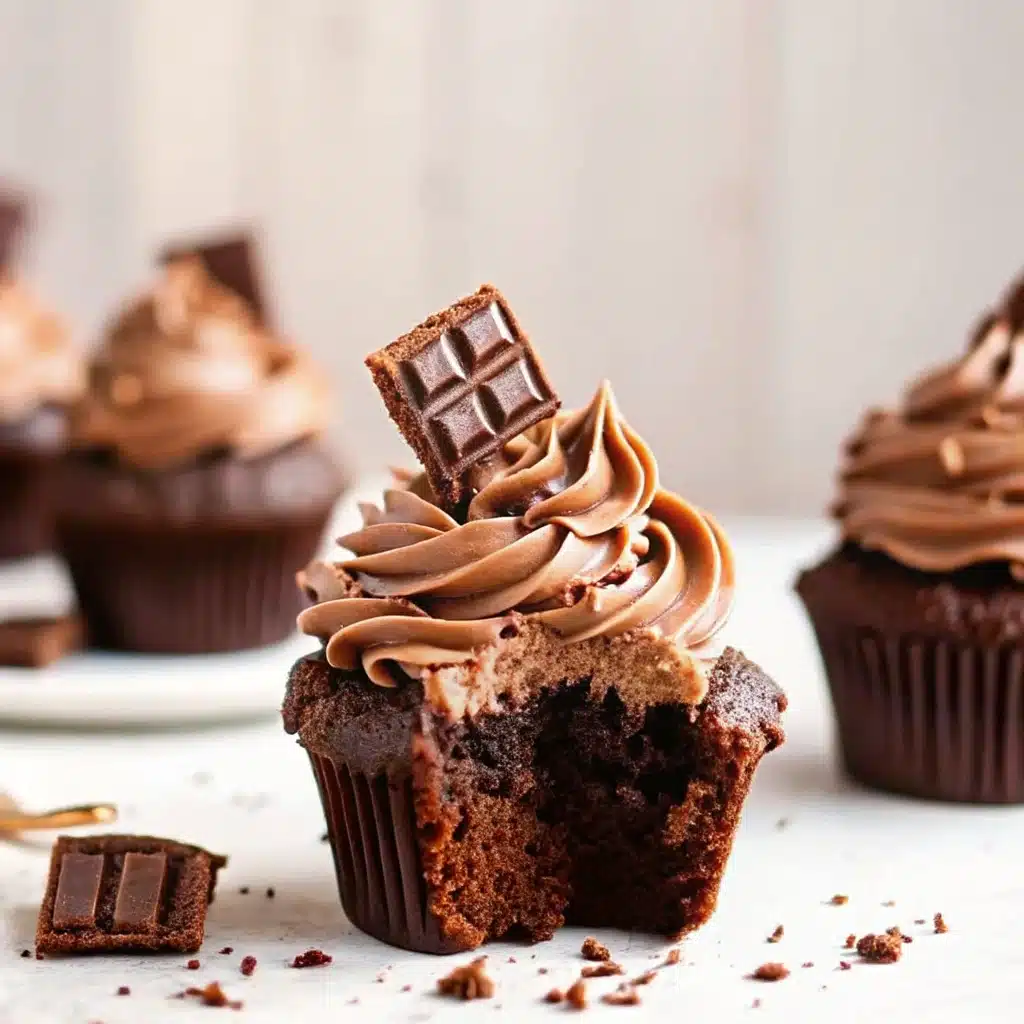
Russian Buttercream is like a blank canvas—it’s luscious on its own, but incredibly versatile when you want to get creative. In this section, we’ll explore simple yet game-changing ways to enhance the flavor and look of your buttercream.
Adding Flavors: Chocolate, Coffee, Vanilla & More
Russian Buttercream’s smooth, buttery base makes it ideal for absorbing additional flavors. Whether you’re aiming for classic elegance or bold innovation, here are some top variations to try:
1. Chocolate Russian Buttercream
- Add ¼ cup unsweetened cocoa powder or melted dark chocolate (cooled) after your buttercream is fully whipped.
- Pro Tip: Use Dutch-processed cocoa for a deeper, smoother flavor.
2. Vanilla Russian Buttercream
- Stir in 1 to 2 teaspoons of pure vanilla extract or vanilla bean paste for added depth and aromatic sweetness. It’s a must for wedding cakes or layered vanilla desserts.
- Vanilla bean paste gives you those beautiful specks.
3. Coffee or Espresso Buttercream
- Add 1 teaspoon of instant espresso powder dissolved in 1 teaspoon of warm water.
- Try pairing it with rich cakes like our opera cake for a truly indulgent combination.
4. Berry Flavored
- Stir in berry purees (strawberry, raspberry, blueberry), but keep the volume low to avoid loosening the texture. Start with 1–2 tablespoons.
- For a shortcut, use freeze-dried berry powders.
5. Citrus Zest
- Brighten your buttercream with zest from lemons, oranges, or limes. Just 1 teaspoon can make a big difference without altering consistency.
Here’s a quick flavor boost chart:
| Flavor Add-in | Amount | Notes |
|---|---|---|
| Cocoa Powder | ¼ cup | Sift first to avoid lumps |
| Melted Chocolate | 2–3 oz | Cool before adding |
| Vanilla Extract | 1–2 tsp | Adds classic aroma |
| Espresso Powder | 1 tsp (dissolved) | Intense mocha flavor |
| Berry Puree | 1–2 tbsp | Strain to remove seeds |
| Citrus Zest | 1 tsp | Fresh, bright twist |
Looking for inspiration? Try this frosting on our red velvet brownies with a touch of orange zest for a citrus kick.
Coloring Tips for Decorating Cakes with Russian Buttercream

Coloring Russian Buttercream is easy, but there are a few tricks to make sure your hues are bold, beautiful, and smooth.
Best practices:
- Use gel or oil-based food coloring. Liquid drops can water down the consistency.
- Add colors after whipping the buttercream for even blending.
- Start small and build up: A little goes a long way, especially with deep colors like red or black.
- Rest your colored buttercream: Colors deepen slightly as they sit—especially darker tones.
Pro decorator tip:
For black buttercream, start with chocolate Russian Buttercream and then add black gel coloring. You’ll use less dye and get richer tones without the bitter aftertaste.
Check out our vegan chocolate mousse cake to see how bold color contrast can make a frosting pop visually.
Russian Buttercream holds color beautifully, but avoid overmixing, especially with vibrant shades, to keep the structure stable.
Russian Buttercream vs Other Frostings
Russian Buttercream has quickly gained attention in the baking world, but how does it really compare to other well-known buttercream types? In this section, we’ll break down the strengths and limitations of Russian Buttercream compared to American, Swiss Meringue, and Italian Meringue Buttercreams.
Russian vs American Buttercream: Sweetness, Texture, and Stability
American Buttercream (ABC) is the most widely used frosting style in the United States, known for its simplicity and sweet, buttery flavor It’s quick, uses butter and powdered sugar, and crusts well for decorating. But it has its flaws.
| Feature | Russian Buttercream | American Buttercream |
|---|---|---|
| Sweetness | Mild, not overly sweet | Very sweet |
| Texture | Smooth, silky, non-crusting | Gritty, dense, crusts quickly |
| Ingredients | Butter, condensed milk | Butter, powdered sugar, milk/cream |
| Piping/Decorating | Great for piping & smooth finishes | Excellent for stiff decorations |
| Flavor Customization | Easy with extracts & purees | Easy but can become overly sweet |
| Prep Time | 10–15 mins | 10 mins |
| Ideal Use | Layered cakes, fillings, casual decor | Cupcakes, celebration cakes |
So, if you’re aiming for less sweetness and a creamier mouthfeel, Russian Buttercream is the winner. But if you need firm decorations or crusting (like for buttercream transfers), American may be your go-to.
Russian vs Swiss and Italian Meringue Buttercream: What’s the Difference?
When it comes to professional-level frostings, Swiss and Italian Meringue Buttercreams (SMBC and IMBC) often steal the show. They’re made with egg whites and sugar syrups, which makes them more involved—but very smooth and luxurious.
| Feature | Russian BC | Swiss Meringue BC | Italian Meringue BC |
|---|---|---|---|
| Ingredients | Butter + condensed milk | Butter, egg whites, sugar | Butter, egg whites, hot syrup |
| Texture | Smooth, rich | Light, fluffy, silky | Smooth, stable, silky |
| Difficulty | Very easy | Moderate (heating involved) | More complex (requires precision) |
| Sweetness | Mild | Mild | Mild |
| Stability | Fair | High | Very high |
| Time to Make | 10–15 mins | 20–30 mins | 30+ mins |
Swiss and Italian versions are perfect for wedding cakes, outdoor events, and fancy designs where stability is a must. However, they can be intimidating for beginners.
Russian Buttercream, on the other hand, is the ideal in-between: easier than meringue-based frostings and more elegant than American-style ones.
Looking for a cake that works beautifully with all types? Don’t miss our crowd-pleasing vanilla cake recipe—it’s neutral enough to pair with any buttercream variation.
Storage and Shelf Life
If you’re planning ahead for a party or prepping frosting in batches, it’s crucial to know how to store Russian Buttercream safely—without sacrificing texture or flavor. In this section, we answer the essential questions: Does Russian Buttercream need to be refrigerated? How long can it sit out? And how long does it last?
Does Russian Buttercream Need to Be Refrigerated?
Yes—technically, Russian Buttercream should be refrigerated, especially if you’re storing it for more than 12 hours. While butter and sweetened condensed milk are both stable ingredients, they’re still dairy-based. This means the frosting can soften or spoil if left out for too long in a warm environment.
Refrigeration Tips:
- Keep it in an airtight container in the refrigerator for up to one week.
- If using on a cake, refrigerate the cake and bring to room temperature 1–2 hours before serving for the best texture.
Pro tip: Russian Buttercream hardens in the fridge but softens quickly. If it seems stiff, let it sit at room temperature and re-whip for a few seconds to bring back its silky finish.
Check out our chocolate raspberry cake for a fridge-friendly dessert that works beautifully with Russian Buttercream.
How Long Can Russian Buttercream Sit Out?
Russian Buttercream is more room-temperature stable than cream cheese frostings, but not as shelf-stable as American buttercream.
- Ideal room temperature use: Up to 6–8 hours at 68–72°F (20–22°C).
- Avoid leaving it out in warm kitchens or outdoor events where temps rise over 75°F.
If left out too long, the butter in the frosting can start to separate or melt—especially in summer months or near heat sources like ovens or windows.
How Long Does Russian Buttercream Last?
Here’s a quick guide:
| Storage Method | Duration | Notes |
|---|---|---|
| At room temperature | 6–8 hours | Keep in cool, shaded environment |
| In the refrigerator | 5–7 days | Store airtight; re-whip if needed |
| In the freezer | 2–3 months | See Part 7 for freezing tips |
Orphan link alert? Then this is your chance to explore our unique twist on apple jack cereal desserts—surprisingly good topped with a cold Russian Buttercream swirl.
Freezing and Reusing Russian Buttercream
Russian Buttercream not only makes baking day easier, but it also makes planning ahead totally possible. Yes, you can freeze it, but the real trick lies in thawing and re-whipping it properly for that same silky-smooth texture.
Can You Freeze Russian Buttercream?
Yes, Russian Buttercream is freezer-friendly for up to 2–3 months. This makes it ideal for busy bakers, large batch decorators, or those who want to avoid last-minute prep stress.
Freezing Instructions:
- Store the buttercream in an airtight container or a resealable freezer bag.
- Remove as much air as possible to avoid freezer burn.
- Label with the date and flavor.
- Store flat in the freezer to save space.
Best Practice: Divide into portions before freezing so you only thaw what you need.
How to Thaw and Rewhip for Best Results
Reheating or thawing improperly can cause Russian Buttercream to split or curdle. No need to worry—here’s how to bring it back to perfection:
Step-by-step defrosting:
- Remove from the freezer and place in the refrigerator overnight (8–12 hours).
- Once chilled but no longer frozen, let it sit at room temperature for 30–60 minutes.
- Re-whip with a hand or stand mixer on medium speed for 2–3 minutes until smooth.
If the buttercream separates (looks curdled), try one of these recovery tricks:
| Issue | Solution |
|---|---|
| Too cold/separated | Warm bowl gently over a double boiler and re-whip |
| Too soft | Chill for 15–20 mins in fridge, then whip again |
Once revived, the buttercream should be just as spreadable and pipeable as fresh. It’s ideal for use on cupcakes, layered cakes, or sandwiching cookies.
Don’t miss our tiramisu sponge cake—a perfect pairing for frozen-then-thawed coffee-flavored Russian Buttercream.
Need a creative outlet for leftover frosting? Try piping it on our mini chocolate cakes for an effortless but impressive dessert.
Expert Tips for Using Russian Buttercream in Cakes
Russian Buttercream is smooth, pipeable, and ultra-forgiving—making it a go-to choice for decorators who value speed without sacrificing elegance. Whether you’re frosting a tiered birthday cake or adding swirls to cupcakes, these expert tips will help you get the most out of this unique frosting.
Best Cake Types for Russian Buttercream
Russian Buttercream pairs beautifully with both dense and light cakes, as its non-gritty, silky texture enhances the bite without overpowering the sponge.
Here are top cake matches:
| Cake Type | Why It Works Well |
|---|---|
| Chocolate Cake | Balances rich cocoa flavors with buttery smoothness |
| Vanilla or Sponge Cake | Lets the subtle sweetness of the buttercream shine |
| Carrot Cake | The mellow sweetness offsets the cake’s spice profile |
| Fruit-Filled Cakes | Adds richness without clashing with fresh fruit or jam |
| Pound Cake | The smooth frosting contrasts the dense, buttery crumb |
For a delicate, romantic pairing, check out our rose milk tea cake—it’s heavenly with floral-infused Russian Buttercream.
Does Russian Buttercream Crust and How to Handle It?
One of the most common questions: Does Russian Buttercream crust like American Buttercream?
Short answer: No.
Russian Buttercream does not crust—meaning it remains soft to the touch, even after sitting out. This is great for achieving a super-smooth finish, but less ideal for detailed decorations that require a crusted surface.
What this means for decorators:
- Achieving a smooth finish is simple with a heated spatula or bench scraper.
- Crumb coats stay tacky, making it easy to apply a final layer without sliding.
- Textured looks (ridges, waves, rustic swirls) work better than ultra-sharp edges.
If you need your design to hold stiff details (like flowers, ruffles, or sharp stenciling), chill the cake after frosting. Russian Buttercream firms up beautifully in the fridge without going rock-hard.
Here’s a quick pro summary:
| Feature | Russian Buttercream |
|---|---|
| Crusting Ability | No (remains soft) |
| Texture After Chill | Firm, smooth, easy to trim/decorate |
| Best Use Cases | Rustic swirls, smooth finishes, light piping |
Want to see chilled Russian Buttercream in action? Discover great ideas like our lemon tiramisu—its cool citrus notes pop against this frosting when chilled and piped.
Conclusion
Russian Buttercream is silky, versatile, and incredibly easy to make—the kind of frosting that delivers pro-level results without the learning curve. Whether you’re decorating a layered cake, piping cupcakes, or prepping frosting in advance, its texture and flavor are unmatched.
Its mild sweetness, smooth consistency, and freeze-friendly nature make it a must-try for both beginners and expert bakers. So next time you reach for frosting, skip the sugar overload and go Russian.
Looking for more inspiring desserts? Don’t miss our flourless chocolate cake (vegan) for a rich base that pairs perfectly with vanilla or coffee-infused Russian Buttercream.
Fore more recipes follow me in Facebook, medium and Pinterest
FAQs
Does Russian Buttercream Need to Be Refrigerated?
Yes. Since Russian Buttercream contains dairy (butter and condensed milk), it should be refrigerated if you’re not using it within 6–8 hours. Store leftovers in an airtight container in the fridge for up to 7 days. Bring to room temperature and re-whip before reuse for best texture.
Can You Freeze Russian Buttercream?
Absolutely. It freezes well for up to 3 months. Use an airtight container or freezer bag. Thaw overnight in the fridge, then bring to room temperature and re-whip until silky. This makes it perfect for prepping ahead.
Does Russian Buttercream Crust?
No, Russian Buttercream does not crust like American Buttercream. It stays soft to the touch, which helps create smooth finishes and swirl patterns. For firmer texture, refrigerate it—it’ll firm up enough for basic decoration or trimming.
How Long Can Russian Buttercream Sit Out?
You can leave it at room temperature for 6 to 8 hours if the temperature stays under 72°F (22°C). Avoid letting it sit out in hot or humid conditions. For anything longer or during summer, refrigeration is a must.
How Long Does Russian Buttercream Last?
Room Temp: 6–8 hours
Fridge: 5–7 days
Freezer: 2–3 months
Always re-whip chilled or thawed buttercream before applying to cakes or cupcakes.


